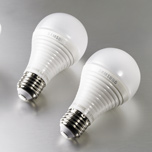June 14, 2013 — For years light-emitting diodes have been seen as a greener alternative to incandescent and fluorescent bulbs. But they come with a cost — both literally and figuratively, since most LEDs are made from rare-earth elements that are expensive and hazardous to extract and process. A team of researchers at the University of Washington has come up with an alternative that’s easier on the eye, the pocketbook and the environment. Using silicon-based nanoparticles derived from sand, the budding entrepreneurs have developed LEDs that more closely mimic natural sunlight for a fraction of the cost of standard LEDs. The future is looking bright — and welcoming — indeed. Photo by samsungtomorrow (Flickr | Creative Commons)
Ensia shares solutions-focused stories free of charge through our online magazine and partner media. That means audiences around the world have ready access to stories that can — and do — help them shape a better future. If you value our work, please show your support today.
Yes, I'll support Ensia!
